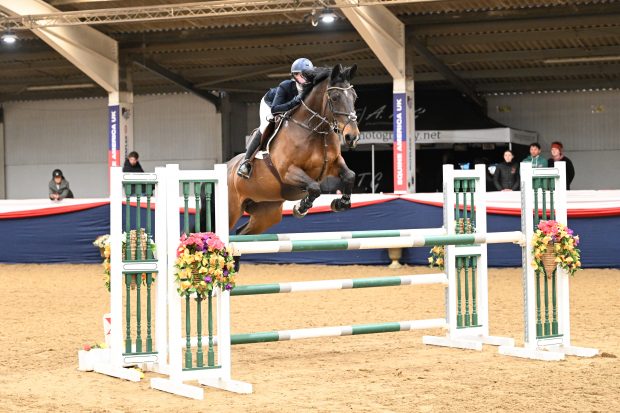In a bid to expand its membership and make the sport more enjoyable, the British Show Jumping Association will introduce a few changes to its class and show schedule from next January.
The BSJA has long set out to provide “a program [sic] of show jumping throughout the year that is safe, interesting and which helps riders to advance, if they wish, from grassroots to the very highest level.”
However, it believes that some of these targets have yet to be achieved. For this reason, the UK Show Jumping Development Committee was tasked to develop a series of proposals to improve the sport. Formulated in early August, they were ratified on 23 August 2005. They were then previewed at the Area and Regional Representatives and Show Organisers Conference and will become active from 1 January 2006.
To help draw more people into the sport, the BSJA will introduce a new range of Intro classes for next year. These classes will cater both to new members and existing members that like to jump their horses at a lower fence-height. They won’t have a minimum height, but they will have a maximum of 1m.
“We want to make sure that people who are in their comfort zone have as many opportunities as possible to compete there and have the infrastructure to progress if they want to,” says Jacky Knightley of the BSJA. “If you’re jumping at 80cm, 1m looks huge, but 90cm can be manageable.”
Knightley says that plenty of would-be members fall in that 80cm category. “What we are trying to do is service a market within show jumping,” she says. “But we would like them to become members because we have professional designers, judges and infrastructure that allows them to go forward.”
In other words, she says, the new classes are not a sell-out. “We are not lowering the standards—we are lowering the poles.”
Three national qualifiers—90cm Amateur, 1m Amateur and British Novice first round will run at this level. The BSJA will also organise a Regional Points League “so riders will know what position they are within their own region,” says Knightley.
The other big innovation is that show schedules will fall into one or more of six categories: Advanced, Progressive, Intro, Amateur and Juniors—plus a Special category for Stallions and Age classes.
The Intro category will obviously cover intro classes and will have maximum prize money of £25 for the first prize.
The Progressive category identifies “the level that provides the membership with a route for producing horses and developing themselves from British Novice level upwards.” It will cover British Novice, Discovery, Newcomers, the 1m and 1.10m Amateurs and 1.10m Open. No class, except the British Novice, is allowed at 90cm at this level. Equally, no classes over 1.10cm are allowed. Advanced will include Newcomers and all classes above that, excluding the 1.10m Open. Shows in the Amateur category will run all amateur classes and will only be able to run National qualifiers that are specifically for amateur riders. Junior classes will fall into a single category throughout 2006, although this may change in the future.
“This is not a categorisation of shows that says one is better than another,” says Knightley. “It is a categorisation of schedule so people will know what they are going to jump.”
This classification will also ensure the BSJA can reduce calendar clashes between similar shows in similar areas. Show organisers are now required to state the category or categories of show they would like to run whenever they affiliate a show that takes place from 1 April 2006. The BSJA rules allow any show to offer more than one category so long as there is no significant clash with another show.
“Show organisers will tell us what category their show falls in and if anyone else runs a conflicting schedule we will protect the higher show,” explains Knightley. “It is a working tool for the BSJA and for the shows themselves. Show organisers will know that there is already an A show that weekend and they had better plan a C show. The objective is to improve the enjoyment of the sport for all.”



